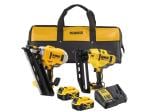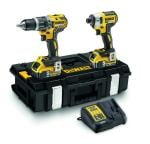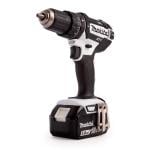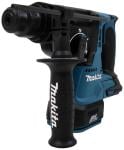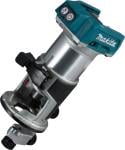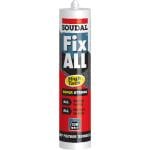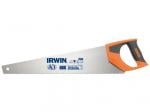How To Cut Plasterboard
Whether you're a DIY enthusiast or a professional contractor, mastering the art of cutting plasterboard is essential for any construction or renovation project. Plasterboard, also known as drywall or gypsum board, is a versatile material commonly used for walls and ceilings due to its ease of installation and finishing.
In this guide, we'll take you through the various methods and tools required to achieve precise and accurate cuts. From scoring and snapping to using power tools, we've got you covered. Plus, we'll share insider tips and tricks to ensure you achieve outstanding results every time. So, grab your safety gear and get ready to become a plasterboard-cutting expert!
How To Cut Plasterboard
Cutting plasterboard may seem daunting at first, but with the right approach and tools, you'll find it much easier than expected. Let's delve into the step-by-step process for cutting plasterboard:
Step 1: Measure and Mark
Before cutting, measure the dimensions required for your project and use a pencil or chalk line to mark the cutting lines on the plasterboard. Accurate measurements are crucial for achieving a professional finish.
Step 2: Scoring and Snapping
One of the simplest methods to cut plasterboard is by scoring and snapping. Use a utility knife to score along the marked lines deeply. Then, carefully snap the board along the scored line, ensuring clean edges.
Step 3: Hand Saw Method
If you don't have power tools, a hand saw can be used to cut plasterboard. Choose a saw with fine teeth and use a straightedge as a guide to make straight cuts. - See hand saws for sale
Step 4: Jigsaw Technique
A jigsaw is a versatile power tool that can be used to cut curves and irregular shapes in plasterboard. Secure the plasterboard firmly and use a jigsaw with a fine-tooth blade for best results. - See jigsaws for sale
Step 5: Circular Saw Method
For faster cutting, especially when dealing with large projects, a circular saw is an excellent option. Use a straightedge guide and a carbide-tipped blade to achieve smooth cuts. - See circular saws for sale
Step 6: Recessed Edges for Joints
When cutting plasterboard for joints, consider using a rasp or surform tool to create recessed edges. This technique helps in achieving seamless joints during installation.
Step 7: Coping Technique for Corners
For internal corners, the coping technique is ideal. Cut one piece of plasterboard at a right angle, and then use a coping saw to cut along the contour of the adjacent board. This ensures a precise fit for a professional finish.
Tips for Cutting Plasterboard Like a Pro
Achieving flawless cuts requires some finesse. Here are some expert tips to help you cut plasterboard like a pro:
- Use the Right Tools: Invest in high-quality cutting tools, such as sharp utility knives, jigsaws, circular saws, and coping saws, to achieve clean and accurate cuts.
- Safety First: Always wear appropriate safety gear, including safety glasses, dust masks, and ear protection, when cutting plasterboard.
- Practice Makes Perfect: If you're new to cutting plasterboard, practice on scraps before tackling your main project to build confidence and improve your technique.
- Sharp Blades: Regularly check and replace blades to ensure clean cuts and avoid damaging the plasterboard.
- Support the Board: Have someone assist you or use sawhorses to support the plasterboard while cutting, preventing it from sagging and causing uneven cuts.
- Score Deeply: When using the scoring and snapping method, make sure to score deeply along the cutting line to achieve a clean break.
- Avoid Overcutting: Take your time when using power tools, as overcutting can lead to unnecessary wastage and affect the quality of the cut.
- Mind the Dust: Cutting plasterboard produces fine dust particles, so work in a well-ventilated area and consider using a dust extraction system.
- Consider Lifting Aids: Plasterboard sheets can be heavy, so consider using lifting aids or seek assistance when handling larger pieces.
Conclusion
Cutting plasterboard is an essential skill for anyone involved in construction or renovation projects. With the right tools, techniques, and safety measures, you can achieve precise cuts and professional results. Remember to measure accurately, choose the appropriate cutting method, and take your time to master the art of plasterboard cutting. Now, armed with this comprehensive guide, you're ready to tackle your plasterboard cutting projects like a seasoned pro. So, go ahead and create stunning walls and ceilings with confidence!
FAQs
- Can I use a regular saw to cut plasterboard? Yes, you can use a hand saw for cutting plasterboard. However, power tools like jigsaws or circular saws tend to be more efficient and provide cleaner cuts.
- How do I avoid chipping the plasterboard edges while cutting? To avoid chipping, ensure your cutting tools are sharp and use masking tape over the cutting line before sawing.
- What's the best way to cut curved shapes in plasterboard? A jigsaw with a fine-tooth blade is the best tool for cutting curved shapes in plasterboard.
- Can I cut plasterboard with a utility knife? While it's possible to cut plasterboard with a utility knife, it's more suitable for scoring and snapping rather than making long straight cuts.
- What type of plasterboard is best for wet areas like bathrooms? For wet areas, use moisture-resistant plasterboard (green board) to prevent water damage.
- Should I wear protective gear when cutting plasterboard? Yes, always wear safety glasses, dust masks, and ear protection to safeguard yourself from potential hazards.


